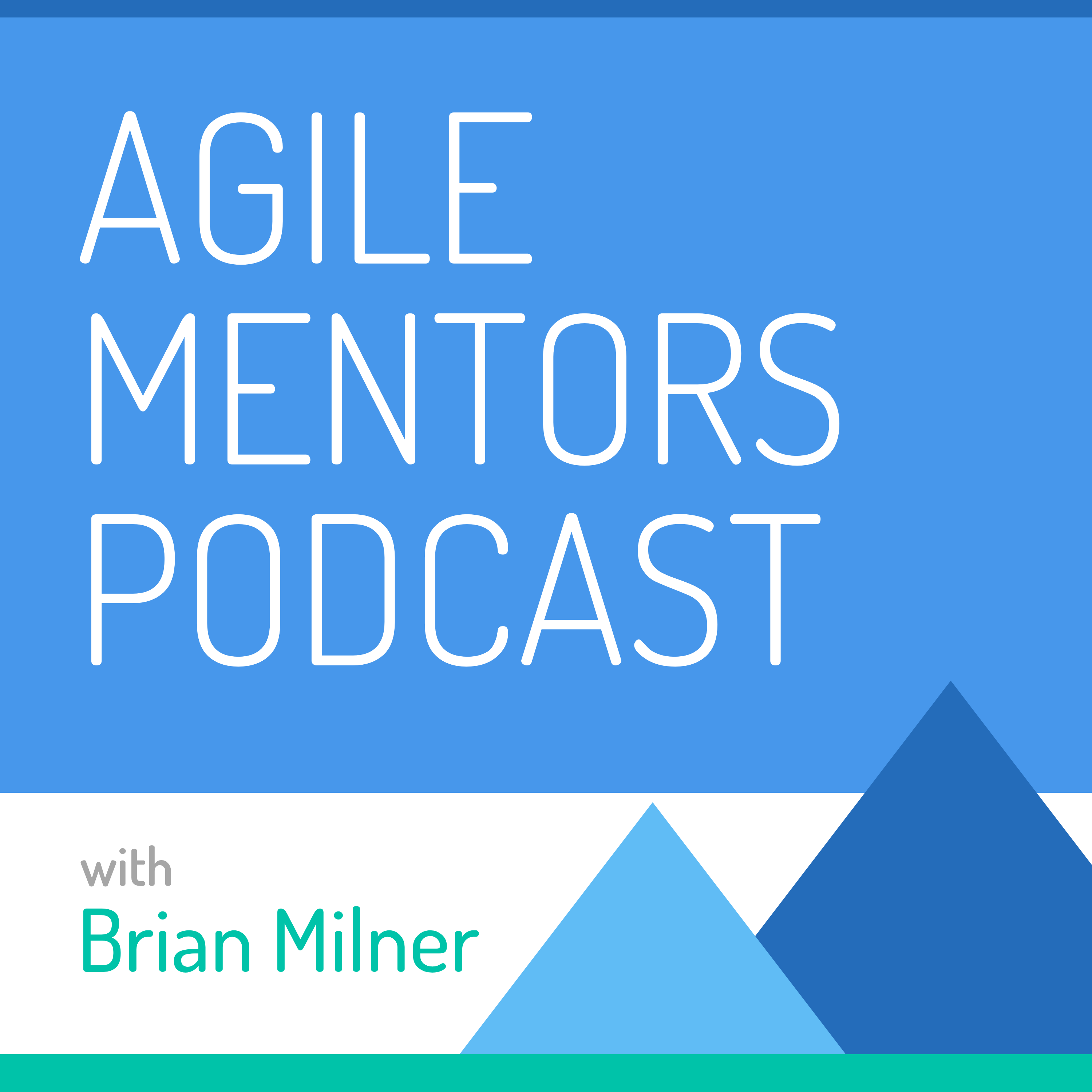August 02, 2023
•
43
minutes
In this episode of the Agile Mentors Podcast, Brian welcomes Don McGreal to discuss the revision of the Scrum Guide and the delicate balance between staying true to the core principles of Scrum while allowing for necessary flexibility.
July 26, 2023
•
18
minutes
Are your retrospectives boring? Join us on the latest episode of the Agile Mentors Podcast as Brian shares valuable insights on how to supercharge your retrospectives. Discover the three root causes behind boring or ineffective retrospectives and unlock tips to enhance their effectiveness.
July 19, 2023
•
16
minutes
Join Brian Milner in another episode of the Agile Mentors Podcast series on unlocking the secrets of a sustainable pace. Today he’s delving into the power of "No" in Agile. Tune in to discover the truth behind feature usage, prioritize value-driven choices, and tips for mastering the art of saying no without losing your job.
July 12, 2023
•
15
minutes
In this week's episode of the Agile Mentors Podcast, Brian Milner dives deep into the importance of experimentation in Agile organizations. Tune in to learn valuable tips for Scrum Masters, Product Owners, and Developers to embrace an experimental mindset.
July 05, 2023
•
16
minutes
In this episode of the Agile Mentors Podcast, Brian takes listeners on a discovery of what sustainable pace is, what it isn’t, and how embracing a culture that is pro work-life balance can lead to not only enhanced well-being for your team members but also help them be more productive.
June 28, 2023
•
44
minutes
In this episode of Agile Mentors, Brian sits down with Lance Dacy to discuss integrating Agile and Scrum practices into the world of data science.
June 21, 2023
•
32
minutes
Unveiling the truth behind Agile coaching! Brian sits down with Lucy O'Keefe to debunk the misconceptions, share the keys to effective coaching, and share their insight on the one-two punch of training and coaching for sustainable success.
June 14, 2023
•
33
minutes
Join Brian and Agile pioneer Jim Highsmith as they dive into the riveting saga of 17 tech rebels who defied convention, unleashed their passions, and revolutionized the world of software development.
June 07, 2023
•
34
minutes
Gain insights into building cohesive and agile teams that bleed into each other and explore how conflicts can be transformed into opportunities for growth and improvement when Brian and his guest Julie Chickering delve into how to create team safety.
May 31, 2023
•
35
minutes
Join Brian and his guest Lance Dacy as they explore the key differences, skill sets required, and the exciting opportunities in the roles of Scrum Master and Product Owner.
May 24, 2023
•
18
minutes
Join Brian as he rediscovers and relives the most captivating topics, memorable guests, and impactful topics from the first year of the “Agile Mentors” podcast.
May 17, 2023
•
41
minutes
Join Brian and his guests, Janet Gregory, and Lisa Crispin, as they share their expertise on integrating testing into Agile teams. Discover how to bridge the gap between programmers and testers for collaboration and success.
May 10, 2023
•
37
minutes
Join Brian and his guest Bob Payne as they discuss the principles of lean thinking and how they apply to Agile methodologies.
May 03, 2023
•
35
minutes
Join Brian and guest Christina Ambers on this episode of the "Agile Mentors" podcast as they discuss the importance of asking the right questions during a job interview to determine if a company (and its culture) is a good fit for you.
April 26, 2023
•
32
minutes
Join Brian and guest Scott Dunn as they share practical tips on navigating the challenges and achieving success in implementing Agile practices in regulatory environments on this episode of the "Agile Mentors" podcast.
April 19, 2023
•
33
minutes
In this episode of the “Agile Mentors” podcast, Brian and Anu Smalley share their perspectives on the relationship between culture and Agile transformation and why people are key.
April 12, 2023
•
35
minutes
In this episode of the Agile Mentors podcast, Brian and Richard Cheng discuss the challenges of working in a virtual environment, sharing insights and strategies for maintaining team collaboration and communication. Listen in for practical tips and expert advice on navigating the changing landscape of remote work.
April 05, 2023
•
35
minutes
Join Brian and Bob Galen, Agile Coach and author, as they explore the significance of self-mastery in leadership and coaching.
March 29, 2023
•
36
minutes
Karim Harbott joins Brian to talk about the 5 levers of crafting a strong culture in an organization and the critical role of leaders in establishing it.
March 22, 2023
•
38
minutes
Chris Li joins Brian to talk about making informed decisions about going out on your own and navigating the challenges of entrepreneurship.
March 15, 2023
•
29
minutes
Mike Cohn joins Brian to share his experience facilitating story-writing workshops and offers insights on creating effective user stories that deliver value to customers and focus to your team.
March 08, 2023
•
39
minutes
Kubair Shirazee, Founder of Peace through Prosperity, joins Brian to share his experiences using Agile tools for social and societal transformation, helping to empower marginalized communities and break the cycle of poverty.
March 01, 2023
•
32
minutes
Brad Swanson joins Brian to explore the concept of servant leadership and share actionable takeaways to help you lead with compassion and empathy.
February 22, 2023
•
39
minutes
Dallas Jackson joins Brian to explore the human aspect of work and the challenges that come with prioritizing the team while ensuring everyone is heard.
February 15, 2023
•
34
minutes
Join Lance Dacy and Brian Milner as they discuss the use of metrics in an Agile environment to ensure optimal performance without taking things in the wrong direction.






